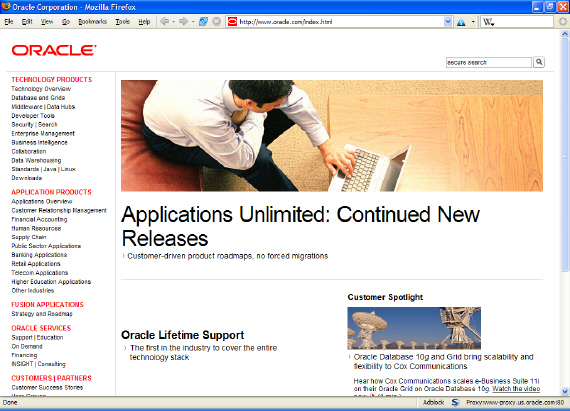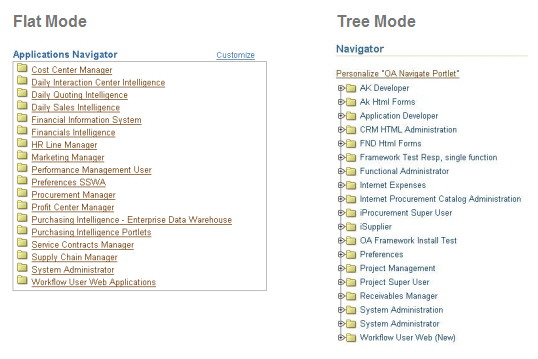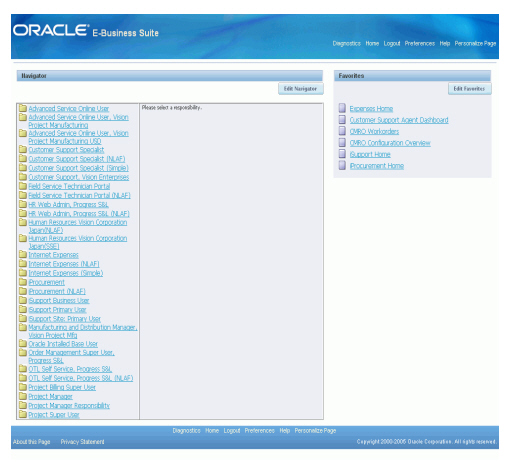In-Depth: Using Portal 10g with the E-Business Suite
This article covers the use of Oracle Portal 10g (10.1.2.0.2) with the E-Business Suite
Portal 10g is Oracle's enterprise portal product, allowing users to create web sites that consolidate and publish information from a variety of sources. Oracle's corporate website is built with Portal:

Portal users can access the E-Business Suite via the Application Navigator, a small portlet that displays a hierarchical menu of an authenticated user's Applications Responsibilities and their associated menu items. Here's a screenshot of the Applications Navigator:

Here's a screenshot of the draft Release 12 equivalent, with Applications Favorites portlet thrown in at no extra charge:

The Applications Navigator portlet's menu is user-specific: only the responsibilities that the user is authorized [link] for are displayed, so every user will see a different menu. The Navigator menu provide access to all E-Business Suite content, including Self-Service web-based applications like iExpenses, as well as Forms and Discoverer workbooks.
Other portlets are available for:
- Application Favorites A list of bookmarked links to specific E-Business Suite screens
- Applications Worklist A list of the user's Workflow Notifications
- Balanced Scorecard Graphical and tabular key performance indicators based on E-Business Suite data
You need to do the following to use Portal with the E-Business Suite:
- Integrate the E-Business Suite with Single Sign-On 10g (this is a mandatory prerequisite)
- Install the E-Business Suite Oracle Applications Framework Web Provider in your E-Business Suite environment
- Register the E-Business Suite Web Provider in your Portal environment
- Build a custom portal page that displays the E-Business Suite portlets of your choice
Individual E-Business Suite applications such as Balanced Scorecard write portlets to expose their data in Portal. These portlets communicate with Portal via the Oracle Applications Framework (OAF) web provider, a small E-Business Suite technology stack plug-in that handles user session management and transmission of portal content on-demand.
A Flurry of Activity
Here's what happens behind the scenes to produce a portal page containing an E-Business Suite portlet:
An end-user navigates to Portal. If the user isn't already logged in, she's redirected to Single Sign-On, where she's logged in. Once properly authenticated, she's redirected back to Portal.
The Portal Parallel Page Engine (PPE) begins assembling the home page that the user will eventually see, dispatching requests to the various sources for the latest office gossip, stock quotes, Discoverer workbook portlets, and so on.

Portal notes that the end-user's home page includes the Applications Navigator. Portal calls the OAF web provider, requesting the data for that portlet.
The OAF web provider looks up the user's authorization and then passes control to the portlet code that actually retrieves the data from the E-Business Suite database. That data is sent back to Portal, which renders the portlet according to wrapper information provided by the OAF web provider.
Certification with Portal 10.1.4
The latest version of Portal 10g available at the time of this post is Portal 10.1.4. This version is still being certified with the E-Business Suite.
No comments:
Post a Comment